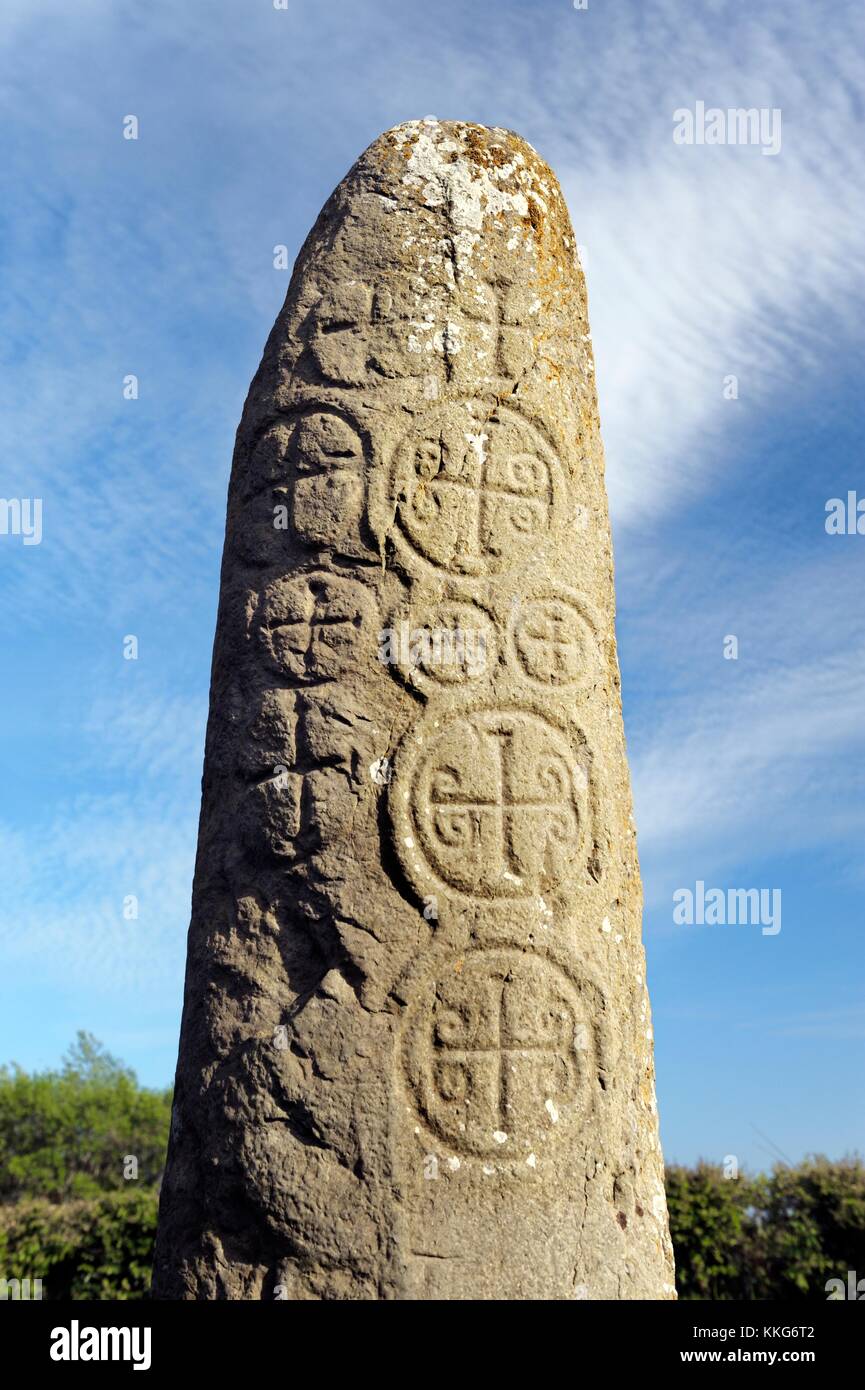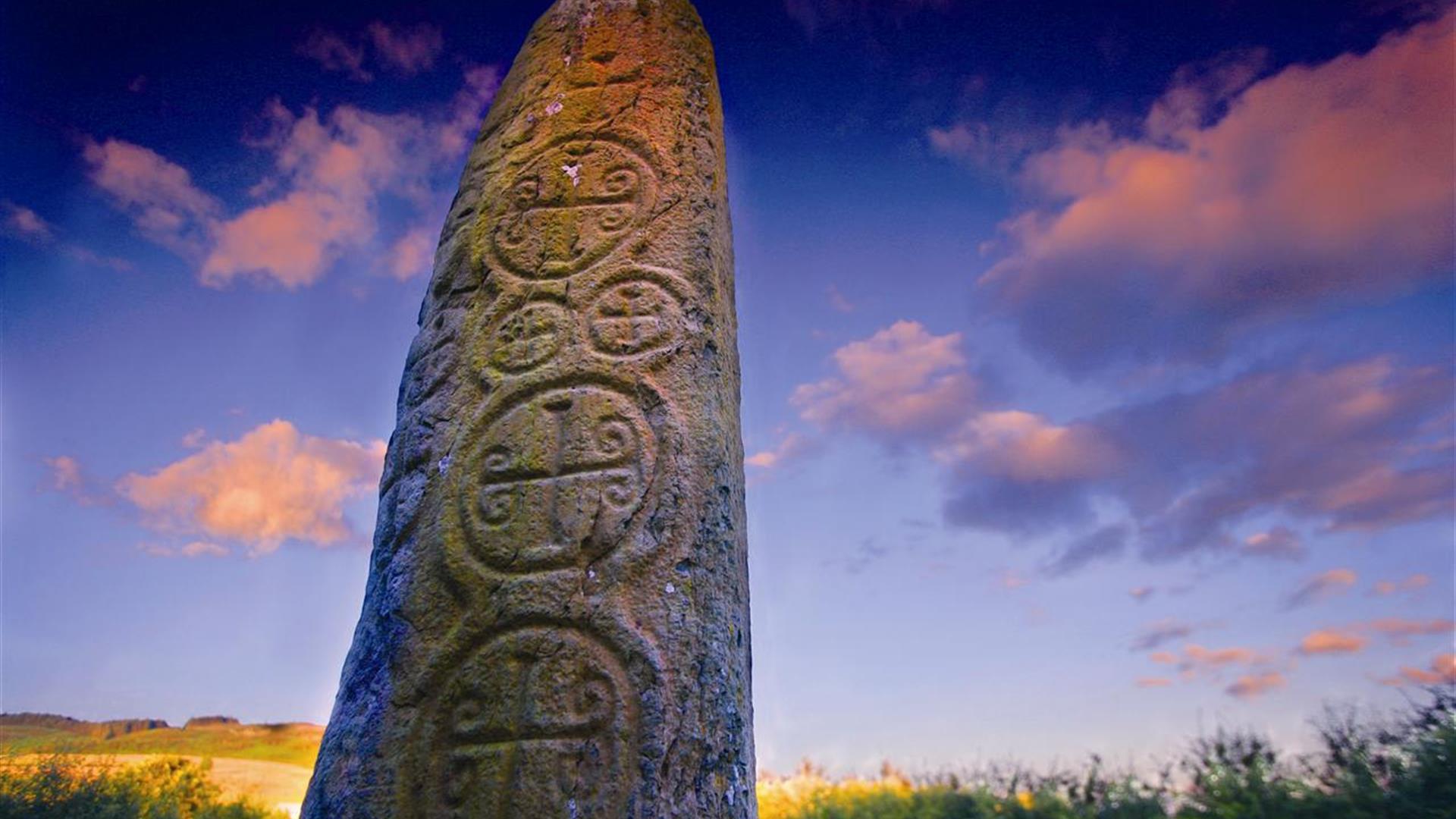Let’s get one thing straight. This isn’t just a rock. It’s a granite-hewn, history-soaked, weather-beaten piece of Ireland that’s seen it all. Think of it as the ultimate OG.
The Kilnasagart Stone, or “Cill na Saggart” as it’s known in Irish, which means ‘the church of the priest,’ isn’t some forgotten relic. It’s a statement. A monument. An ancient, silent sentinel standing watch over the landscape.
You’ve probably scrolled past a hundred photos of it online, maybe a few grainy videos from a YouTuber who looked lost. But the Kilnasagart Stone is more than a destination; it’s a feeling. It’s a gut punch of history that reminds you what was here long before roads had names and castles were made of anything but ambition.
So, let’s pull back the curtain on this incredible slab of rock and uncover the secrets it’s been keeping for over a thousand years.
The Oldest Inscribed Stone? Let’s Talk Dates. 📅
Here’s a fun fact that’ll annoy a lot of other websites out there: the Kilnasagart Stone‘s inscription doesn’t tell us how old the stone itself is. Most of these single standing stones, the type this one is, were put up around 4000 BC. They’re old, right? Like, mind-bogglingly old. Many were even standing before 1500 BC. The inscription on this particular stone, however, is a different story.
That bit of writing, which is one of the oldest dateable stone inscriptions in Ireland, dates to the early 8th century. It’s a beautiful contradiction. A pre-historic stone with an early Christian message carved into its face, a testament to how history layers itself, one era on top of the last.
So, while the Kilnasagart Stone might be the oldest inscribed stone we can put a solid date on, its granite soul has been here for millennia. It’s the kind of fact that puts the size of human history into sharp, humbling focus.
What’s Carved on the Rock? ✍️

It’s not a shopping list, though that would be pretty epic. The Kilnasagart Stone features a total of 13 crosses on its faces, each a silent, powerful declaration of faith. But the real star is the inscription itself. It reads:
‘This place, bequeathed by Ternoc, son of Ceran Bic, under the patronage of Peter, the Apostle.’
It’s a simple sentence, but it’s loaded with meaning. It tells us that a man named Ternoc dedicated this sacred ground to the apostle Peter. And thanks to ancient records, we know that Ternoc died around the year 714 AD. This single piece of information is what allows historians to date the inscription with such precision.
Think about that for a second. We know the name of a man who stood in this exact spot over 1,300 years ago and dedicated this land. This stone is a direct link to a person’s life, belief, and legacy from an era that feels impossibly far away.
A Gateway to the Past: The Gap of the North
The Kilnasagart Stone isn’t just plopped down in a random field. It stands right beside An Slí Miodluachra, the old road that connected the royal seat of Tara to the north of Ireland. This was a superhighway of its day, a vital artery for trade, migration, and, of course, warfare.
The stone’s position also places it near the Gap of the North, a natural boundary and a strategic choke point that has defined this landscape for centuries.
It’s a reminder that this area has always been a place of immense importance. It was a frontier, a crossing point, a place where people and ideas met and clashed.
The stone’s quiet presence today belies the turbulent history of the land it sits on. It’s been a witness to countless journeys and untold stories. It’s the kind of thing that makes you want to sit down, close your eyes, and listen to the whispers of the wind.
A Monastery Lost to History? 🏰
Local folklore says that a monastery once stood here, a spiritual hub in a time of great change. The story goes that it was suppressed during the reign of Henry VIII, a time when Irish monasteries were being torn down and their lands seized.
While there’s no visible trace of it, the tradition persists. Why? Because the stone from that monastery is believed to have been used to build Moyry Castle in 1601. This explains why the fortress, a strategic defense point, was built so quickly—in just two weeks, according to the tale.
Archaeological excavations at the site in 1966 and 1968 provided some corroboration. They didn’t find the monastery’s foundations, but they did uncover an early Christian graveyard. The graves were arranged radially around the pillar, all facing the rising sun. A burial site like that points to a place of significance, possibly a monastic or ecclesiastical settlement, solidifying the local legend.
The Kilnasagart Stone, in a way, is the last remaining piece of that vanished religious community, a solemn reminder of what once stood on this ground.
Why the Kilnasagart Stone Matters Today
In a world of fleeting trends and digital noise, the Kilnasagart Stone is a monument to permanence. It’s a tangible link to our shared past, a piece of rock that has seen civilizations rise and fall. It reminds us of the people who came before, their beliefs, and the landscapes they navigated.
It’s a testament to the power of a single object to hold so much history, so many stories, and so much mystery. It’s more than just an old stone with some carvings; it’s a historical landmark, a spiritual marker, and an enduring symbol of Ireland’s deep, rich heritage.
So next time you’re in County Armagh, make the pilgrimage. Stand beside this ancient rock. Feel the weight of the past. And remember that some things are meant to last, and their stories are carved not just in stone, but in the very land itself.




